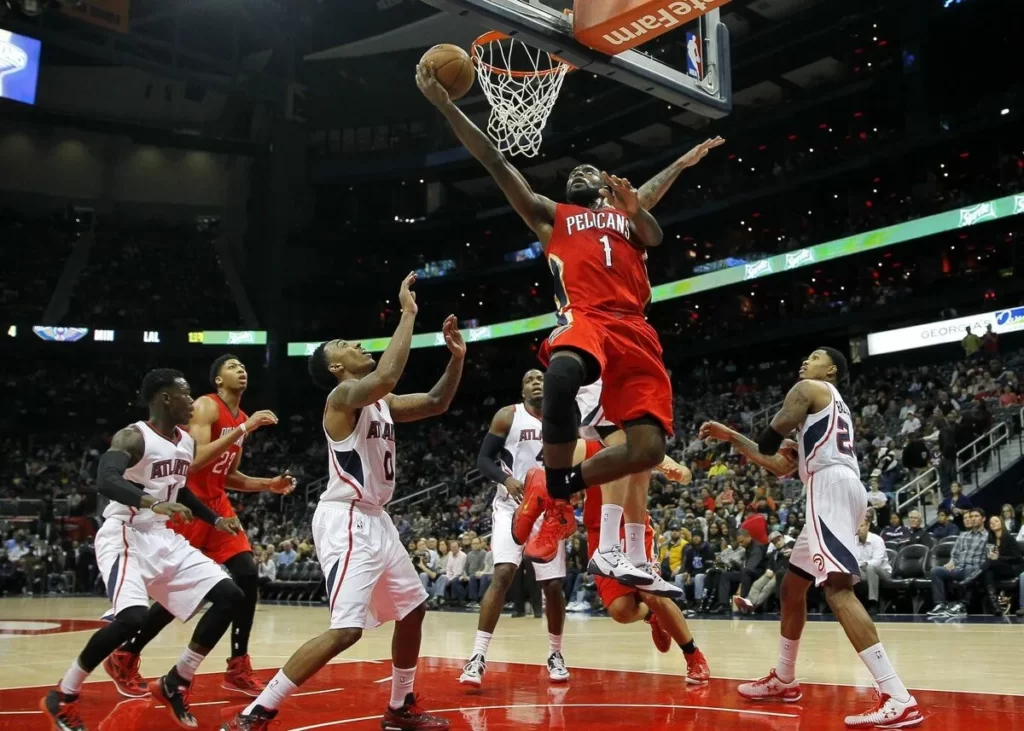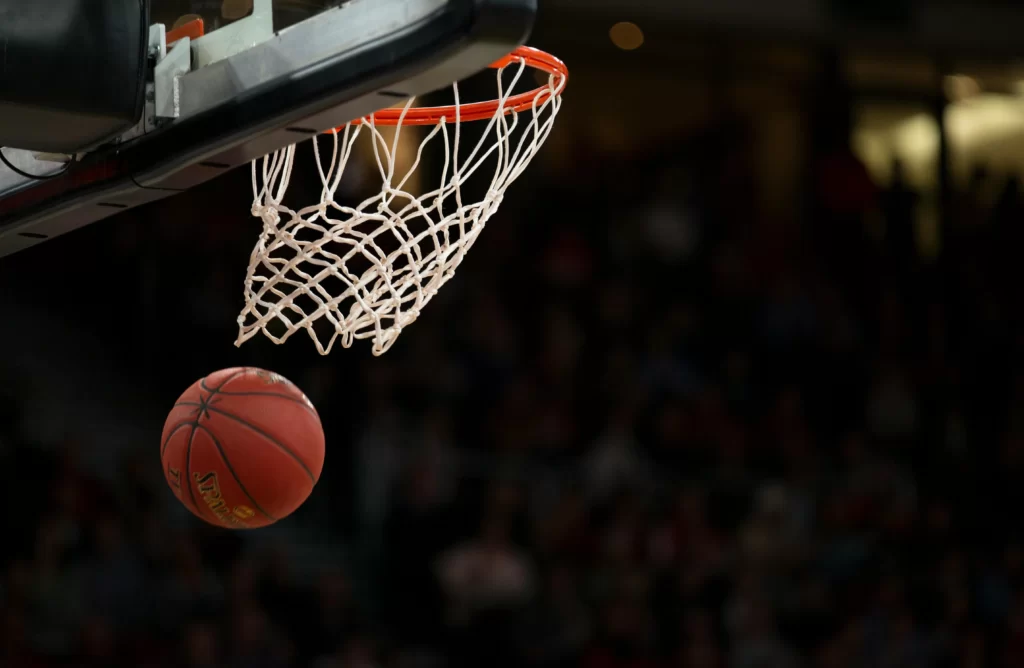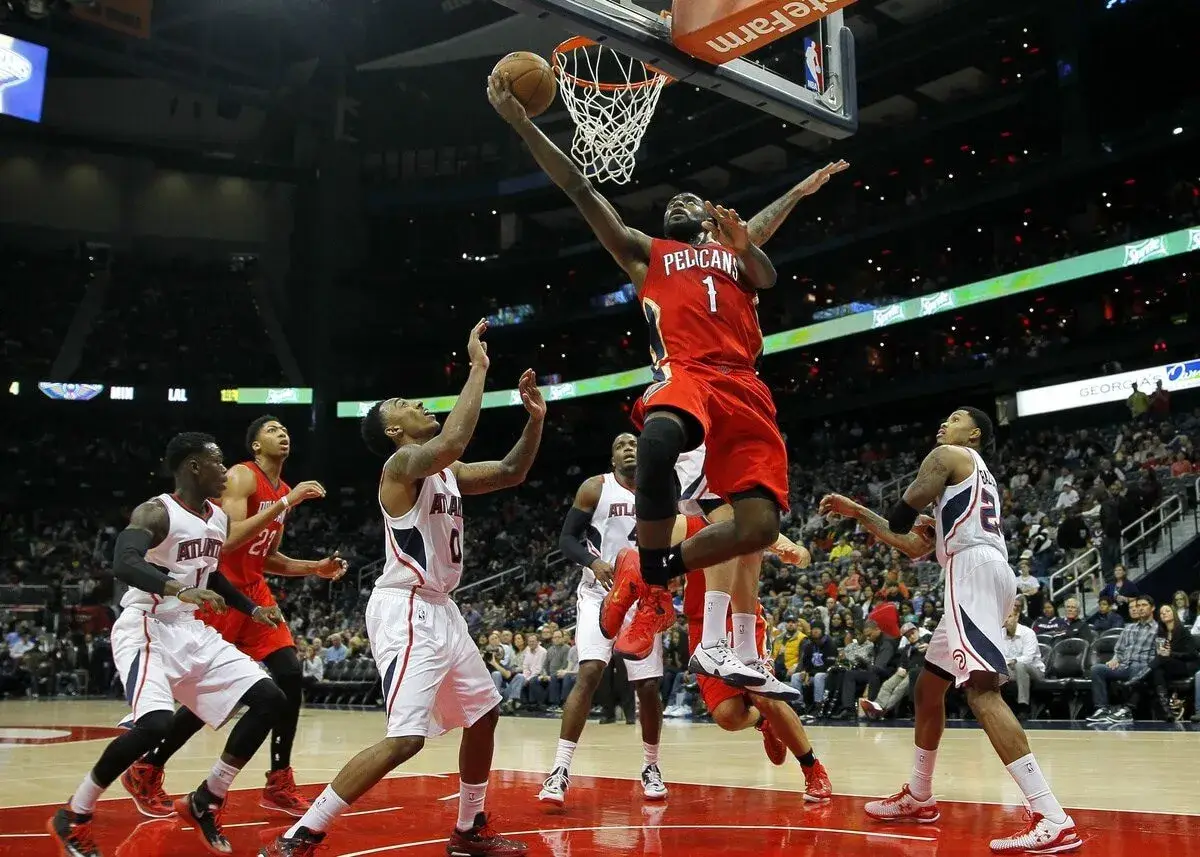The dynamic and exciting sport has won millions of hearts around the world. The rules of basketball seem simple, but this is only at first glance. In fact, they hide deep strategy and tactics. To understand the basics of the game means to discover a world of incredible throws, swift passes and tense confrontations. We will talk about them in this article.
Basic rules of basketball
The game involves two teams of five people, and their goal is to throw the ball into the opponent’s basket and score more points. Each team has one basket for defence and one for attack. Basketball rules define the basic actions of the players: passes, shots, handling the ball and movement on the court.

The game lasts 4 quarters of 10 minutes (12 minutes in the NBA). If the score is tied at the end of the game, extra time is called. A team wins when it scores more points in regulation or extra time. As a simple example, players often use the three-point shot to gain an advantage in the final minutes, turning the match into a real drama.
According to the basic rules of the game:
- There are two teams of 5 players each.
- The match lasts 4 quarters of 10 minutes.
- The aim is to score more points by shooting the ball into the opponent’s basket.
- Extra time in case of a tie.
How to play basketball: rules
To start, you will need a little equipment and space: a basketball court, a ball, trainers with good cushioning and a desire to move. How to play is a question that every beginner will find the answer to after a few practices. It starts with understanding the basic actions: dribbling, shooting, defensive movements and team co-operation.
Dribbling, or dribbling, is about keeping the ball under control by touching the floor. Successful dribbling requires keeping your eyes on the court and not on the ball, which allows you to assess the situation and make decisions. Throws are made with a variety of techniques, from the conventional two-handed shot to complex twisting balls from under the ring. Teamwork, including passes and defensive schemes, helps to strategise the game.
Basketball court, equipment and playing techniques
The playing space is 28 metres by 15 metres with clearly marked lines separating the offensive and defensive zones. There are three lines: centre, three-point line and free throw line. Baskets are placed on each side of the court at a height of 3.05 metres. Understanding the configuration of the court allows for better orientation and tactical schemes.
Basketball
The ball has a diameter of about 24 cm and a weight of 600-650 grams. For official matches, they are made of special leather or composite materials that provide good control and grip. The ball is the main instrument of the game and its properties have a strong influence on the technique of shooting and shooting.
Basic basketball skills
 The rules of basketball require a player to master a number of key skills. Ball handling is the most important skill that allows a player to move around the court while maintaining control of the game. Technique includes proper hand positioning, body weight distribution and the ability to react quickly to defenders. The use of ball rolls and speed changes helps to deceive the opponent.
The rules of basketball require a player to master a number of key skills. Ball handling is the most important skill that allows a player to move around the court while maintaining control of the game. Technique includes proper hand positioning, body weight distribution and the ability to react quickly to defenders. The use of ball rolls and speed changes helps to deceive the opponent.
How to throw the ball correctly in basketball
A successful shot requires holding the ball correctly, using your feet to create momentum, and accuracy when releasing the ball. Regular, deflected and three-point shots require different approaches and practice. Technique depends on the position on the court, but the requirement for control and accuracy remains the same.
Team play requires the ability to make accurate passes, interact with partners and defend. For defence, a low centre of gravity stance is used, which allows you to move quickly and react to your opponent. Throw-blocking and steal-blocking skills also play an important role in a successful game.
Basketball terms and fouls
In order to successfully participate in the game, it is important to know basic concepts:
- “dribbling” – dribbling the ball;
- “rebounding” – catching the ball after a shot that does not hit the basket;
- “assist” – a pass after which a partner scores the ball.
Knowledge of these and other terms allows you to better understand the essence of the game and team co-operation.
Fouls
Violations of basketball rules for which a player receives a warning or penalty. There are personal fouls and team fouls. Personal fouls are shoves or slaps on the hands. Team fouls accumulate and may result in free throws for the opponent. Offences such as “jogging” (when a player takes more than two steps without driving the ball) are also considered fouls.
Penalty shots and touch in basketball
Penalty shots are awarded for certain offences, such as a foul on an offensive player. They are taken from the free-throw line and a successful shot earns one point. The technique requires concentration and precise execution of movements, including accurate positioning of the feet and hands.

A touch occurs when the ball leaves the court. In this case, the team that did not touch the ball last gets the right to throw it in from the touchline. Outs are often used for tactical changes and to change the tempo of the game. Putting the ball in from touch requires precision and speed to avoid interceptions.
Conclusion
 Knowing the rules of basketball and mastering the basic skills allows you to turn an ordinary sports activity into a real art. Everyone who has learnt and accepted the peculiarities of the game is able to feel the team spirit, improve physical fitness and get unforgettable pleasure from the process. Basketball is not just about shooting and winning, it’s about strategy, co-operation and the desire to get better.
Knowing the rules of basketball and mastering the basic skills allows you to turn an ordinary sports activity into a real art. Everyone who has learnt and accepted the peculiarities of the game is able to feel the team spirit, improve physical fitness and get unforgettable pleasure from the process. Basketball is not just about shooting and winning, it’s about strategy, co-operation and the desire to get better.
 en
en  de
de  ar
ar  es
es  hi
hi  fr
fr  nl
nl  it
it  pt
pt  el
el 









